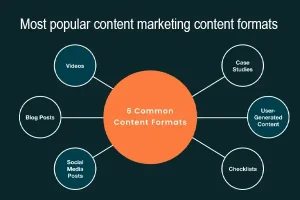How Can I Craft an Effective Content MarketingStrategy?
A well-crafted content marketing strategy is the backbone of successful digital marketing. It aligns your content efforts with business goals, engages your target audience, and drives measurable results. In 2025, with evolving algorithms and audience expectations, a strategic approach is essential to stand out.
This article provides a step-by-step guide to creating an effective content marketing strategy. From setting goals to measuring success, we’ll cover actionable insights to help your business thrive.
What is a Content Marketing Strategy?
Why You Need a Content Marketing Strategy
A strategic approach ensures your content efforts are purposeful and impactful. Key benefits include:
- Alignment with Goals: Content supports specific business objectives, like increasing website traffic or conversions.
- Audience Engagement: Targeted content resonates with your audience, fostering loyalty.
- SEO Success: Optimized content ranks higher on search engines, driving organic traffic.
- Cost Efficiency: A 2024 CMI report found that companies with a defined strategy saw 3x higher ROI than those without.
Steps to Craft an Effective Content Marketing Strategy
1. Define Clear Objectives
Start by setting SMART goals (Specific, Measurable, Achievable, Relevant, Time-bound). Examples:
- Increase website traffic by 20% in 6 months.
- Generate 100 new leads per month through content downloads.
- Boost brand awareness with 10,000 social media impressions.
Clear objectives guide your content creation and measurement.
2. Identify Your Target Audience
Understand who you’re creating content for. Develop buyer personas that include:
- Demographics: Age, gender, location, job role.
- Pain Points: Challenges they face (e.g., “difficulty scaling marketing efforts”).
- Content Preferences: Preferred formats (e.g., blogs, videos) and platforms (e.g., LinkedIn, YouTube).
3. Conduct Keyword Research
Keywords drive discoverability. Use tools like Ahrefs, SEMrush, or Google Keyword Planner to identify:
- Primary Keywords: “content marketing strategy.”
- Long-Tail Keywords: “how to create a content marketing strategy for small businesses.”
- Semantic Keywords: “content planning,” “digital marketing strategy.”
4. Plan Content Types and Topics
Create a mix of content formats to engage your audience:
- Blog Posts: Guides like “Top 10 Content Marketing Tips for 2025.”
- Videos: Tutorials or case study breakdowns.
- Infographics: Visual data summaries for quick consumption.
- eBooks or Whitepapers: In-depth resources for lead generation.
5. Optimize Content for SEO
Ensure content is search-engine-friendly:
- Include primary keywords in the title, H1, first paragraph, and throughout (1-2% density).
- Use semantic keywords (e.g., “content strategy tips,” “marketing plan”) for relevance.
- Add internal links to related pages and external links to credible sources like HubSpot or Moz.
- Keep meta descriptions under 160 characters with a clear CTA (e.g., “Learn more!”).
6. Develop a Content Calendar
Plan content creation and publishing with a calendar. Include:
- Topics and Keywords: What you’ll publish and targeted keywords.
- Formats: Blog, video, or social post.
- Publishing Dates: Ensure consistent output (e.g., 2 blogs per week).
- Channels: Where content will be shared (e.g., website, Instagram, email).
7. Promote Your Content
Amplify reach through multiple channels:
Social Media: Share on platforms where your audience is active (e.g., LinkedIn for B2B, TikTok for Gen Z).
- Email Marketing: Send newsletters with tools like Mailchimp to drive traffic.
- Paid Promotion: Use Google Ads or social media ads for targeted reach.
- Partnerships: Collaborate with influencers or guest post on industry blogs.
8. Measure and Optimize
Track performance to refine your strategy. Key metrics include:
- Traffic: Organic and referral visits (Google Analytics).
- Engagement: Time on page, comments, shares.
- Conversions: Sign-ups, downloads, or sales.
Best Practices for Content Marketing Success
- Focus on Quality: Prioritize in-depth, original content over quantity. A single well-researched article can outperform multiple shallow posts.
- Stay Consistent: Regular publishing builds audience trust and improves SEO.
- Leverage Data: Use analytics to understand what resonates with your audience.
- Update Content: Refresh older content to maintain relevance and rankings.
Conclusion
Crafting an effective content marketing strategy requires clear goals, audience understanding, and optimized content. By following these steps—defining objectives, researching keywords, creating valuable content, and measuring results—you can engage your audience and drive growth. Start building your strategy today to unlock your brand’s potential. Download our free content marketing strategy template or contact us to create a custom plan for your business!









